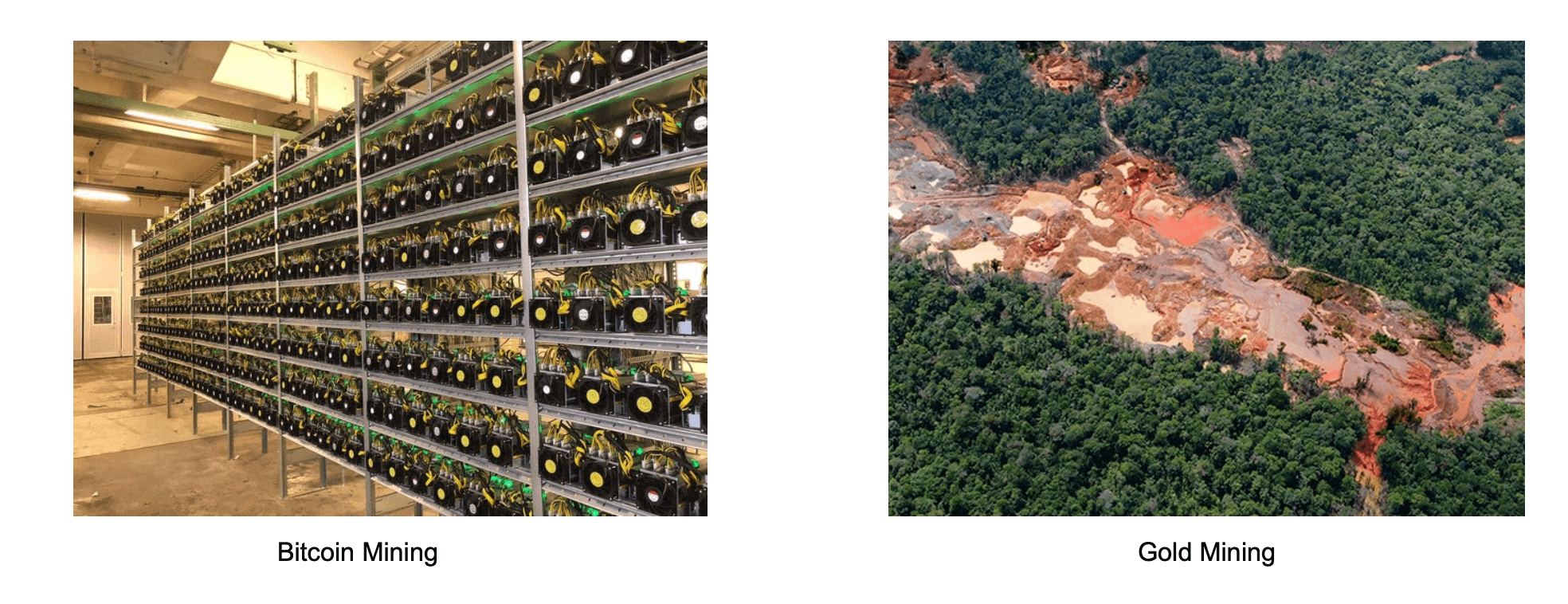This is the beginning of a 3 part series describing Bitcoin mining in three different difficulty levels. You are now on Beginner
If you've heard anything about Bitcoin Mining it's probably that it describes the process of creating new bitcoin.
The term "mining" comes from real-world resources like gold. Just like gold mining introduces new gold that comes from the ground into the economy, Bitcoin mining introduces new Bitcoin into the economy.
The stark difference is that bitcoins don't come from a mine as they are created digitally.

But this new coin creation is actually not the interesting part of the mining process. Mining in bitcoin is simply a means to an end. New coins as a reward to mining are simply an incentive.
Bitcoin advocate Andreas Antonopoulos clarifies that mining secures the bitcoin system and enables the emergence of network-wide consensus without a central authority. The reward of newly minted coins and transaction fees is an incentive scheme that aligns the actions of miners with the security of the network, while simultaneously implementing the monetary supply.
So the main goal of bitcoin mining is the following: Keeping the ledger decentralized. This is the key value proposition of bitcoin.

You hear people pitching it as "digital gold" or "digital cash", but the most important element is that it's decentralized gold and decentralized cash. No one is in control of the network.
How does mining promote decentralization?
Decentralization in the Bitcoin Network is ensured by having a lottery of who becomes the next bank clerk. Because there is not one central authority, everyone can become a miner and apply for the lottery of who's next to decide which pending transactions to add to the blockchain.
If there would be just one miner, the system would be centralized and censoring transactions would be easy to do.
What miners do is guess a random number. It's a challenge. Whoever is first to guess a fitting number becomes the bank clerk for the next block.

More computing power means you have more guesses and therefore a higher chance to win. This guessing process happens on average every 10 minutes, because it takes 10 minutes on average for all of the miners combined to guess a correct number.
Afterwards the lottery begins anew. Everyone can participate and the winner of the lottery becomes the bank clerk for that specific block and gets rewarded with new bitcoin.
The whole process is also known as Proof of Work. The beauty of this system is that it takes a lot of work (in terms of many guesses to guess correctly) but it is very easy for others to verify that the solution is indeed correct once it was found.
We can use an analogy with Sudoku riddles to better explain this.
Solving the sudoku takes work. But once you are done it's very easy for others to check if your solution is correct.

Once someone solves the sudoku, they get rewarded with new bitcoin and the next sudoku begins.
Using this initial explanation will most likely bring up a handful of questions.
- How is it possible that the average of new blocks remains 10 minutes? I mean, computers get better and better and the more people start mining the faster mining should become, right?
- Why does this 10-minute rule even matter in the first place?
- Why would anyone want a system that takes a lot of computing power devoted to guessing random numbers? What’s the point?
- Where does the new Bitcoin come from?
- How does it actually work, can you please stop talking about sudokus?
Great questions! Let's move on to the next level of understanding.

 3 minute read
3 minute read
 Beginner
Beginner Advanced
Advanced Veteran
Veteran